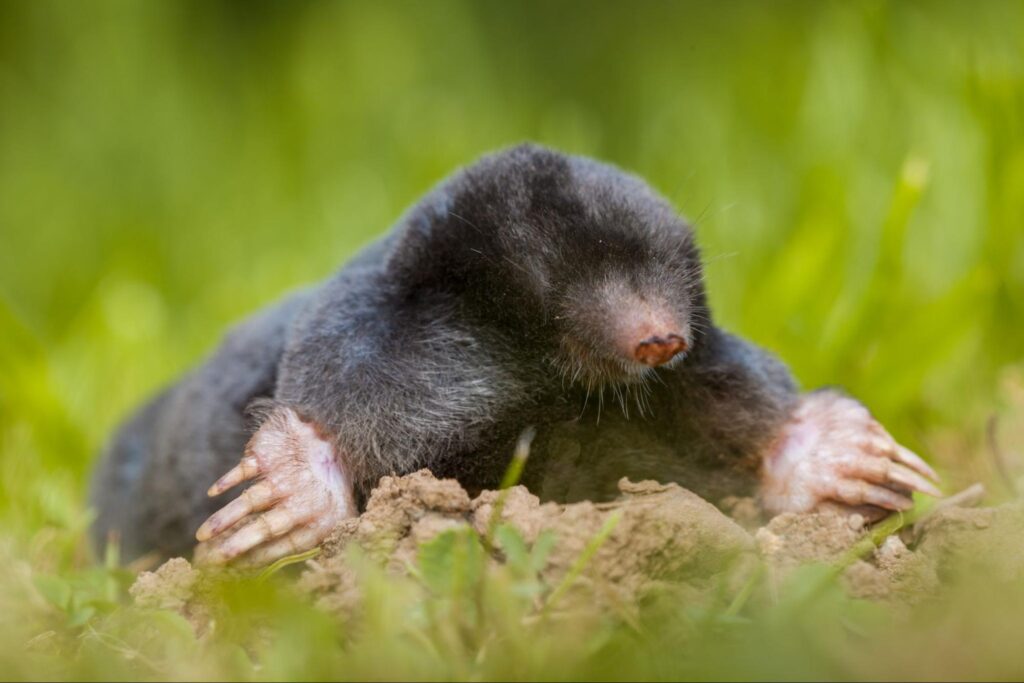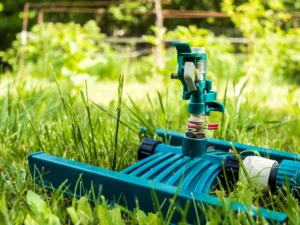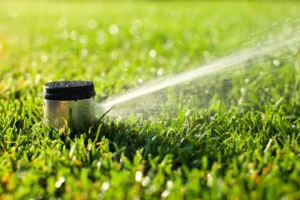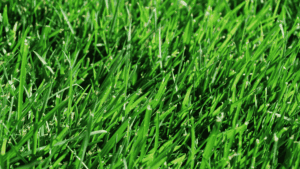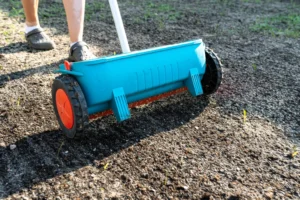Undetected tunnels of moles can wreak havoc on a Dunwoody lawn overnight by tearing up grass roots and creating unsightly mounds. With specialized mole control treatments, Dunwoody homeowners can be assured that their turf will be restored to its original state, and their investment will be protected. This guide will provide clear steps to identify mole activity, explain what attracts them in the first place, review professional removal options, include long-term prevention tips, outline the cost and benefits, and show you how to obtain a free quote for mole control from WeedPro Lawn Care.
How to Identify Mole Damage: Tunnels, Molehills, and Raised Ridges
The signs of mole damage in your lawn are threefold:
- A series of narrow, raised ridges traverses the surface of the lawn.
- Volcano-styled, molehills containing loose, pulverized soil at the openings of the tunnels.
- Soft, spongy areas are caused by grass roots being cut as they burrow.
Once you find the above signs of damage, you can reasonably suspect that your lawn is infested with moles before a serious root disturbance work has been distributed through the turf.
How to Differentiate Mole Damage from Gopher Damage in Your Yard
Accurate identification relies on comparing mound shape, tunnel depth, and soil texture.
| Feature | Mole Damage | Gopher Damage |
|---|---|---|
| Tunnel Profile | Shallow, surface ridges | Deep, collapsed tunnels |
| Mound Shape | Small, volcano-shaped piles | Crescent or fan-shaped mounds |
| Soil Texture | Fine, pulverized soil | Coarser, compact clumps |
Distinguishing these attributes ensures you choose the correct control strategy for effective removal.
What Attracts Moles to Your Dunwoody Lawn and How Does Their Behavior Affect Your Yard?
A Dunwoody lawn with plenty of earthworms and grubs creates an ideal feeding environment, leading to everything above, while the tunnels themselves affect your lawn by displacing the soil structure and causing damage to the roots of plants.
What Do Moles Eat? Understanding The Diet of Grubs and Earthworms
The diet of moles consists of protein-rich invertebrates to maintain burrowing activity. The key foods are:
- Earthworms provide moisture and nutrients for mole metabolism.
- Beetle larvae (grubs), which feed on other turf insects and therefore provide a significant food source for moles that burrow tunnel systems.
- Other soil insects allow moles to maintain their extensive burrowing activity on a daily basis.
Reducing the food sources available to moles will encourage them to dig deeper in the ground, thereby limiting underground activity that can damage your lawn.
How Do Soil and Weather Conditions in Dunwoody Influence Mole Activity?
Clay-loam soils, which retain moisture, and summer storms help to expand the tunnel system, whereas drought will limit the depth a mole will forage. Changes in weather conditions, whether wet or dry, will directly affect the mole’s movement. This will help us coordinate our control efforts more effectively.
What Are the Most Effective Professional Mole Control Methods in Dunwoody?
Certified professionals use more effective trapping, an integrated process, and grubs are the best way to eliminate moles while maintaining a healthy soil profile and a good balance of wildlife.
How Does Humane Mole Trapping Work and Why Is It Recommended?
Humane trapping utilizes live traps to lure moles into a live-capture trap placed in their tunnel system, where they are relocated, and no poisons are used. This practice is supported by WeedPro Lawn Service to protect families, pets, and beneficial organisms in the lawn area.
What Is Integrated Pest Management (IPM) for Moles and How Does It Help?
Integrated Pest Management, IPM, uses habitat modification, continuous monitoring, and targeted treatments to create a sustainable method of mole control. Some fundamental components of an IPM approach include:
- Examining the extent of activity within the tunnel networks.
- Making modifications to moisture and soil properties to promote lower moisture conditions and reduce the risk of reinfestation.
- Applying treatment products only to the affected areas, labeling them as low-toxicity and targeted.
By incorporating good lawn care practices, this balanced approach also minimizes chemical applications while promoting sustainable lawn resilience.
How Does Grub Control Support Long-Term Mole Management?
By reducing the number of grubs, you eliminate a significant food source that makes your lawn less enticing to moles. Some significant actions for grub management include:
- Application of beneficial nematodes or organic insecticidal products to manage grubs at the optimal soil temperature.
- Generally, disturbing the grub developmental zones by aerating the turf regularly.
- Providing fertilizer and overseeding to enhance grass that matures when the insect larvae are more numerous to complete the grub biological cycles naturally.
Managing grubs effectively is the first step in achieving a lawn that is more resistant to moles.
What Lawn Care Practices Help Deter Moles Naturally?
When your lawn is noted to be healthy, it is less resistant to tunnel systems when you:
- Maintain even moisture distribution while hydrating your lawn according to a balanced watering schedule.
- Mow your lawn at the recommended heights, which promotes the reduction of surface drying of soil for mole repair and provides an aesthetic appearance that limits the distinguishability of insect prey.
- Implement organic soil amendments to lower the risk of grub infestations.
Diligent turf management produces a less ideal habitat for moles and contributes to the development of enhanced fibrous root systems.
How Does Seasonal Mole Activity Affect Prevention Strategies in Georgia?
The time of year when foraging moles are most active increases during early spring, and again during heavy rainfall in the summer months. By synchronizing traps to these peak times and utilizing treatments for grubs during late summer, you create substantial barriers to prevent moles through coordinated cycles.
What Factors Influence the Cost of Mole Removal Services in Dunwoody?
Price can be expected based on the:
- Severity of the infestation based on the total number of tunnels and hills of the moles as context to extending options before moving on to punctuated control methods.
- Area to be addressed and accessibility of the turf.
- Determined methods, ex. Trapping only, or the combination of trapping, IPM, and treatments for moles/grubs.
Why Hire a Certified Dunwoody Mole Exterminator Instead of DIY Solutions?
There is a distinction between experts who are certified and those who just decided to offer pest control service. Certified professionals provide their “combined knowledge” and humane methods of the mole, in addition to being eco-responsible regarding products utilized for established methods. While you may try DIY options two or three times and achieve some level of success each time, hiring a professional will offer your lawn the benefits of a better assessment of the mole infestation level, a quicker service response, and guaranteed return visits until moles are considered fully eradicated. Typically, this professional skill and knowledge of the landscape yield additional success and economy.
Reclaim Your Lawn from Moles

Moles are interesting creatures; however, they can quickly damage the health and aesthetic of your lawn, as well as its shape, with their tunnels and hills. If you are a Dunwoody homeowner, you should be aware that these creatures can be stubborn, and it will take some effort to get them under control. However, this can be achieved through treatment and/or environmentally friendly options specifically targeted at moles. In the end, the values of your yard stress factors may impact the ability to reclaim the beauty of your landscape while being careful; if not, it will be temporary until the root systems are adequately supported below the ground surface. Limiting the damage to your yard will most benefit its ability to recover and ultimately be more resilient towards moles. By combining proactive prevention methods with proven remediation processes, you can reclaim your lawn and enjoy a good yard, flat and free of moles once again.
Contact WeedPro for information on safe mole management options or services related to mole extermination. We are a certified pest management company specializing in lawn care and recreation.
FAQs
Do moles cause permanent lawn damage?
Their tunneling damages root systems, causing grass to yellow, wilt, or thin out in affected areas. However, with quick action and proper repair, most lawns can recover fully once the moles are removed.
Are professional mole control methods safe for pets?
Yes, most professional solutions are designed with pet safety in mind and applied in a controlled way to avoid risks. Always confirm with your provider that the methods used are non-toxic and appropriate for households with animals.
Learn Why Moles Target Your Lawn
Understanding the “why” helps stop moles for good. Continue with our next article: “Why Moles Choose Your Dunwoody Lawn and How to Deter Them with Effective Mole Control in Dunwoody, GA.“

